Abstract
The effort of clean up the T/V Exxon Valdez oil spill in Prince William Sound, Alaska, included the use of fertilizers to accelerate natural microbial degradation of stranded oil. A program to monitor various environmental parameters associated with this technique took place during the summer of 1990. Microbiological assays for numbers of heterotrophic and oil-degrading microbes and their hydrocarbon mineralization potentials were performed in support of this program. Fertilizer addition resulted in higher hexadecane and phenanthrene mineralization potentials on treated plots than on untreated reference plots. Microbial numbers in treated and reference surface sediments were not significantly different immediately after the first nutrient application in May 1990. However, subsurface sediments from treated plots had higher numbers of hydrocarbon degraders than did reference sediments shortly after treatment. The second application of fertilizer, later in summer, resulted in surface and subsurface increases in numbers of hydrocarbon degraders with respect to reference sediments at two of the three study sites. Elevated mineralization potentials, coupled with increased numbers of hydrocarbon degraders, indicated that natural hydrocarbon biodegradation was enhanced. However, these microbiological measurements alone are not sufficient to determine in situ rates of crude oil biodegradation.
Full text
PDF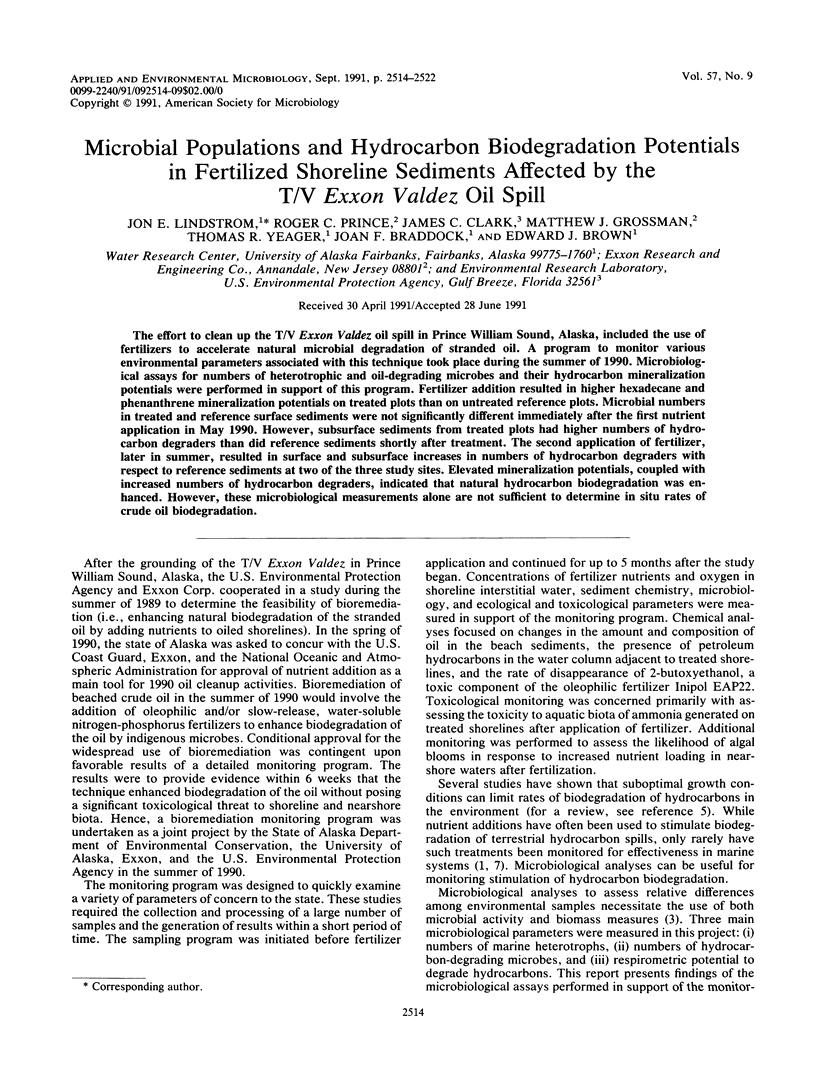
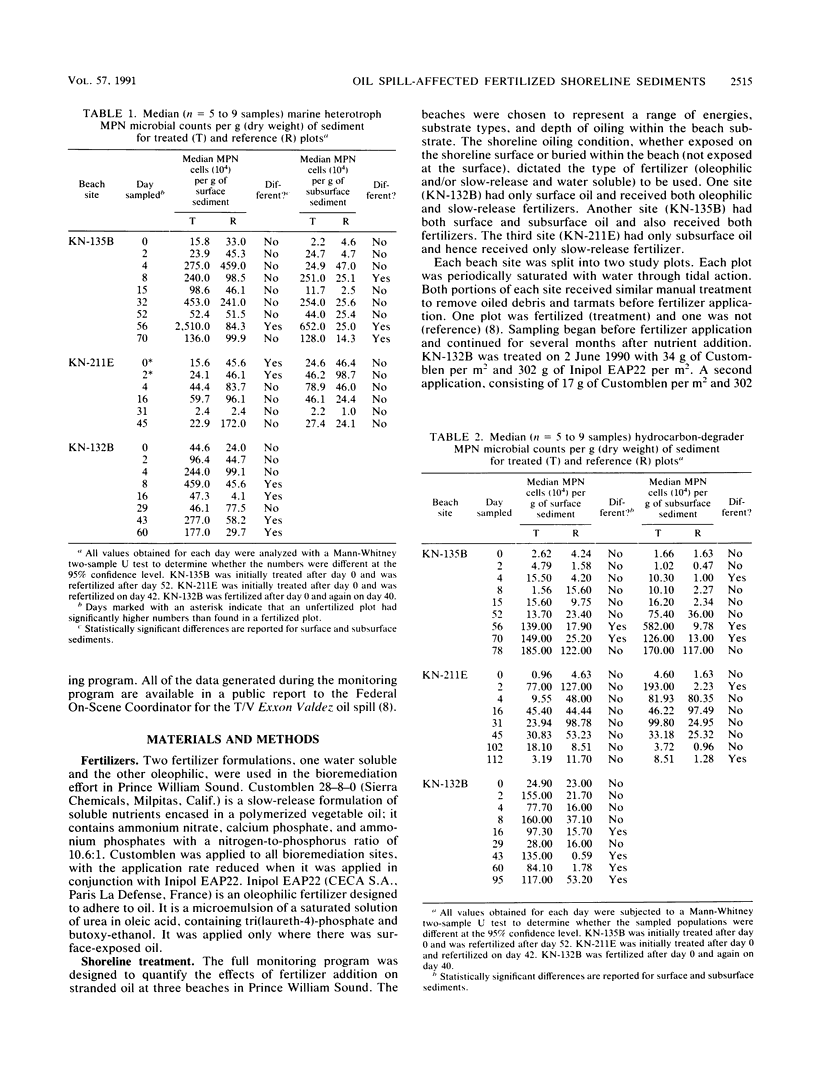
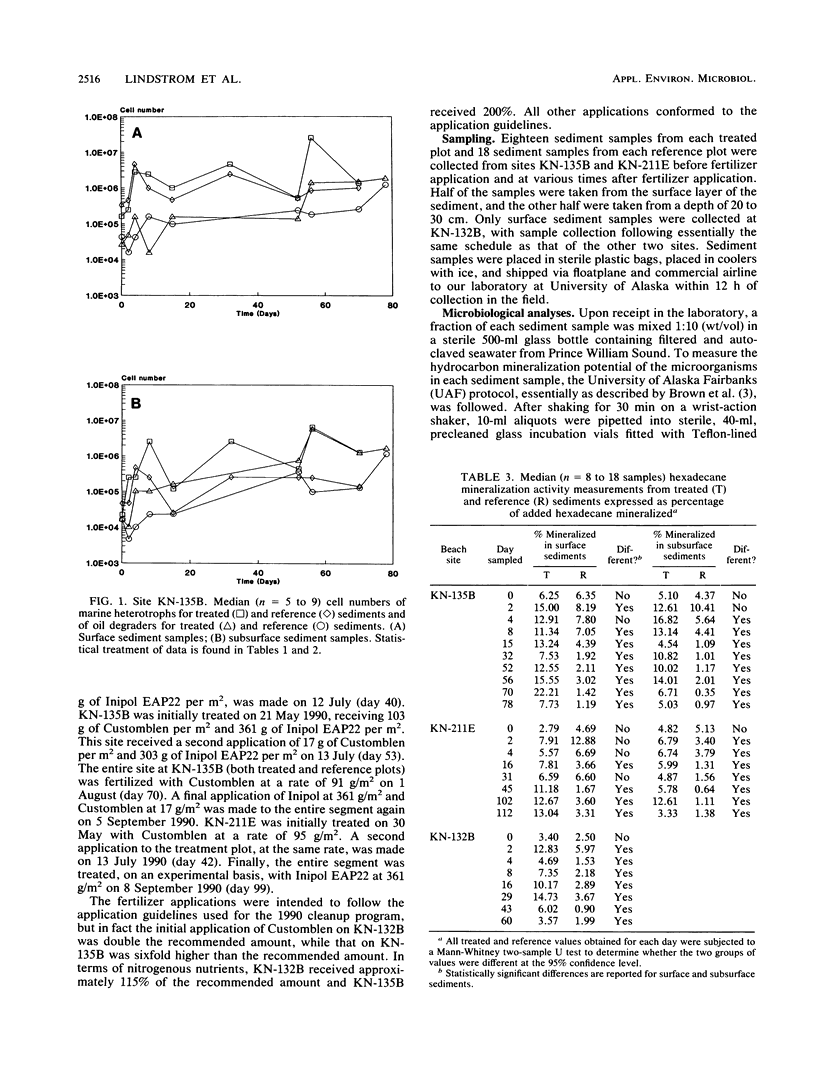
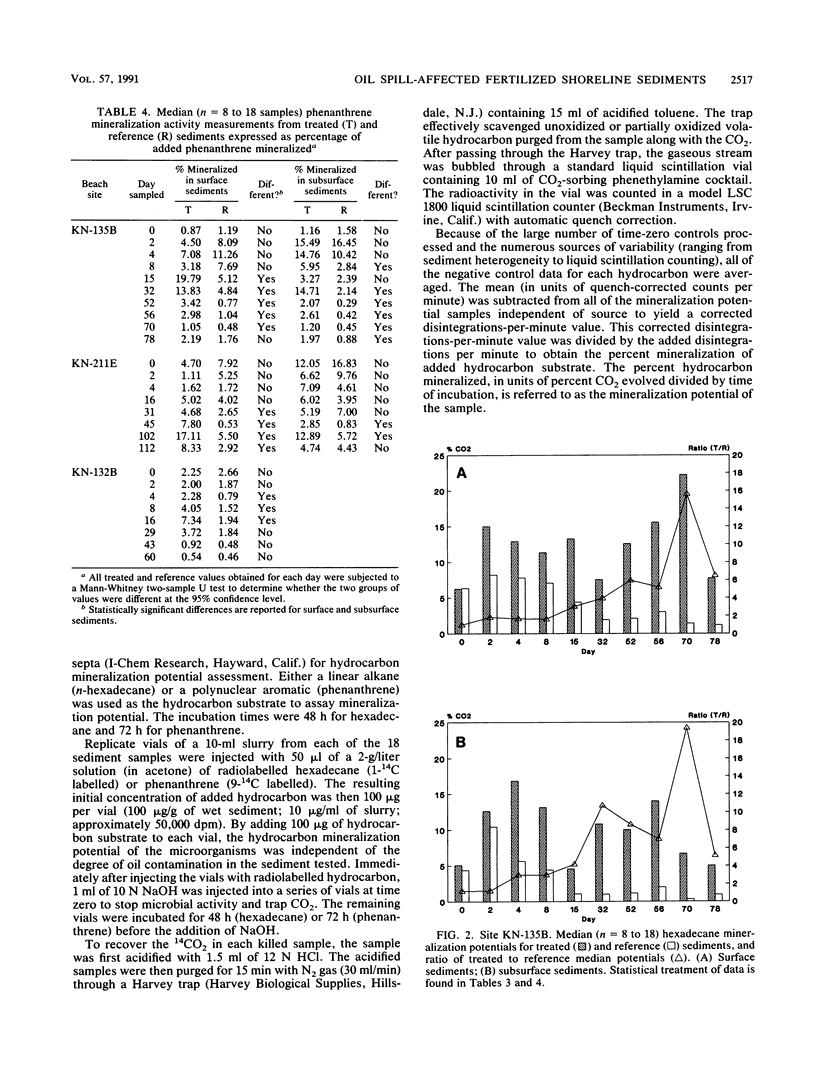
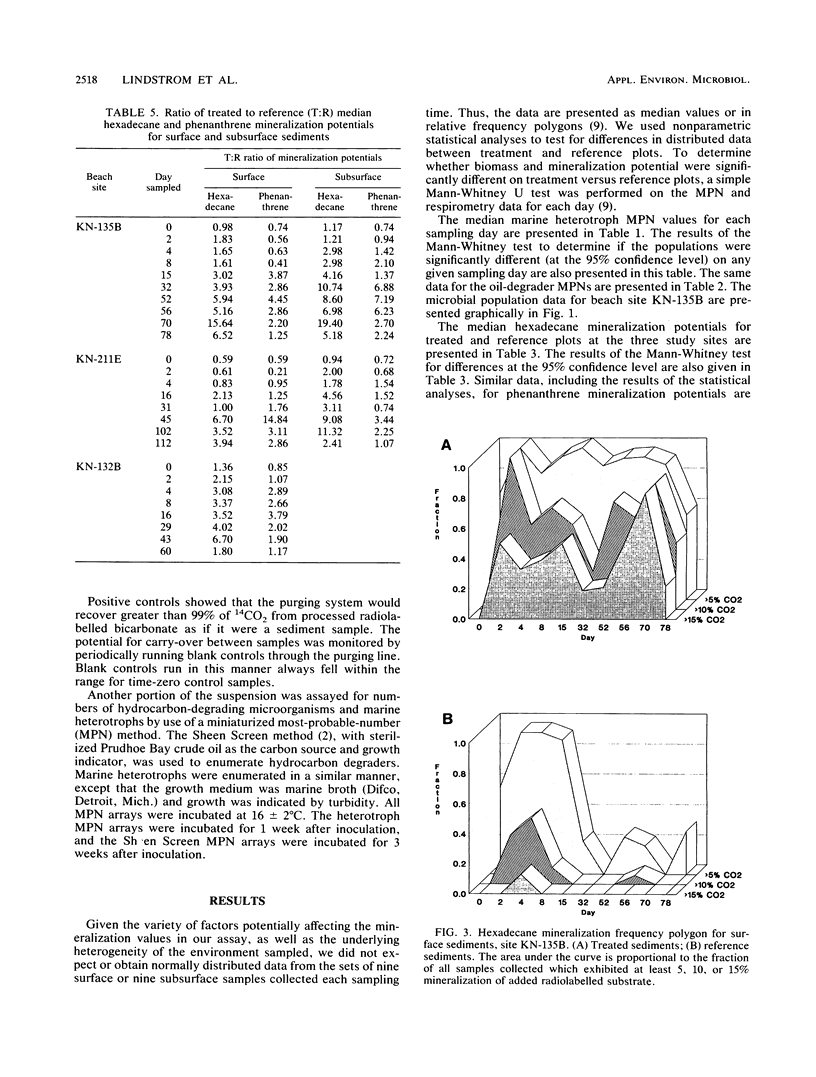
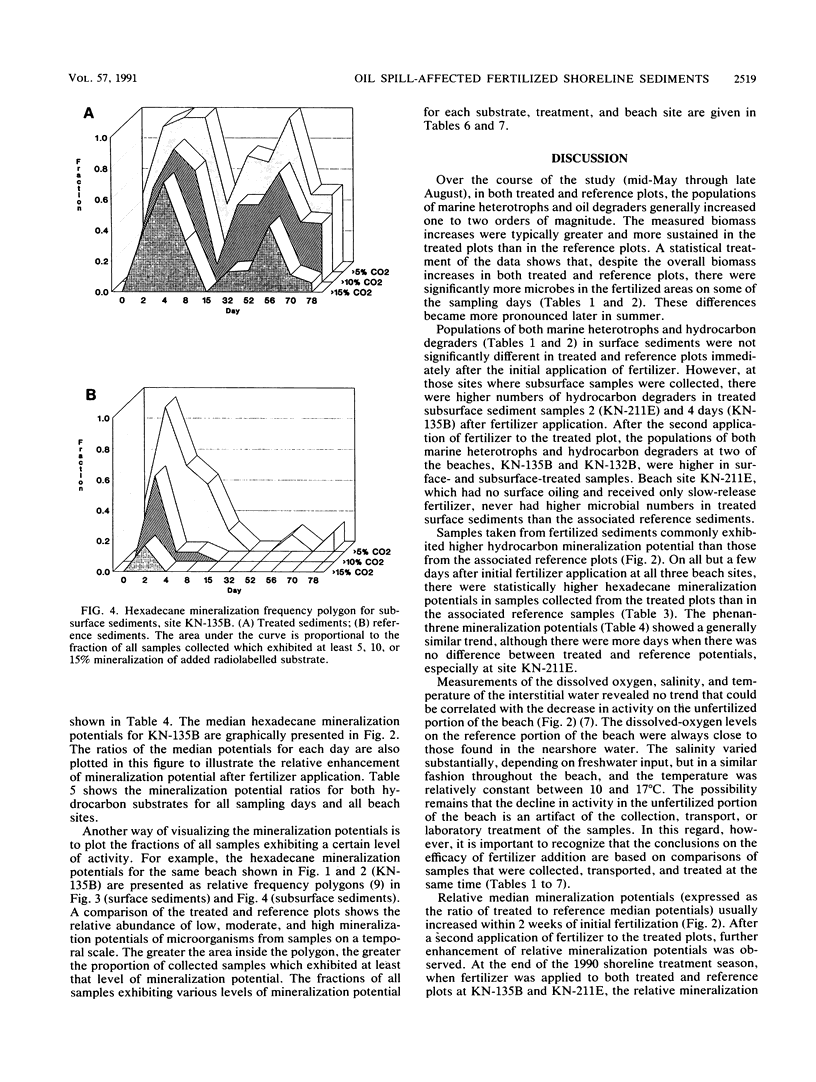
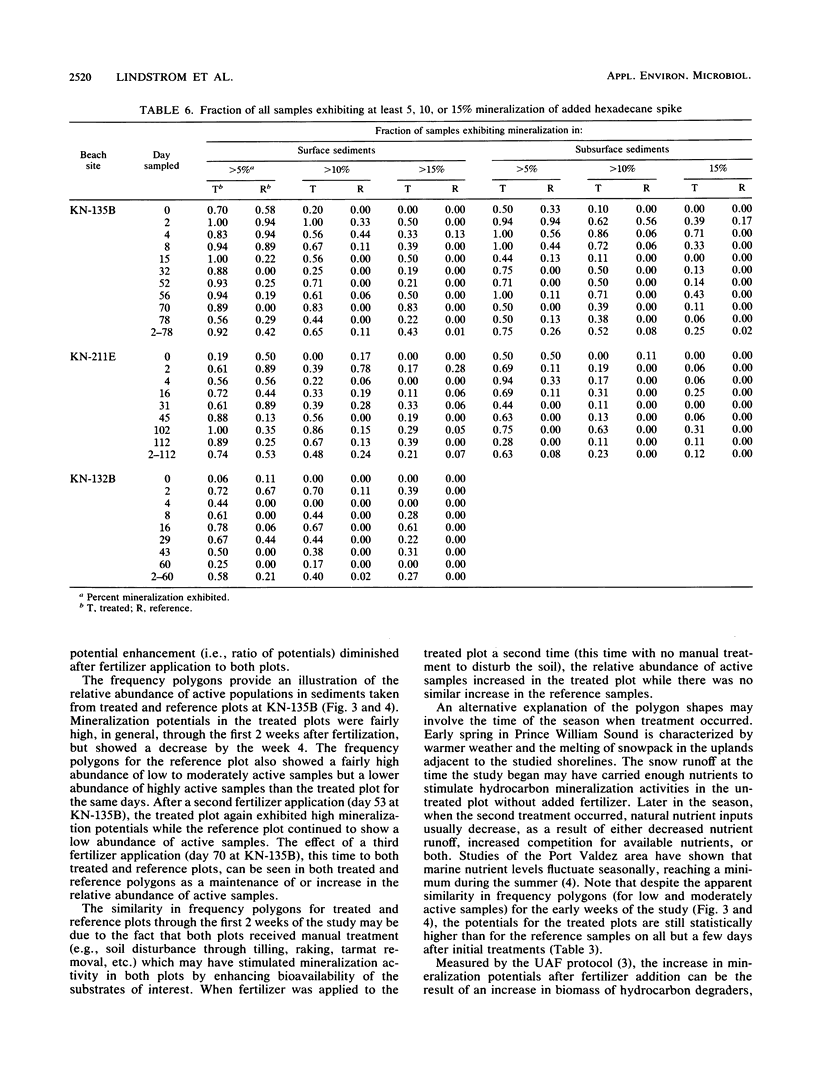
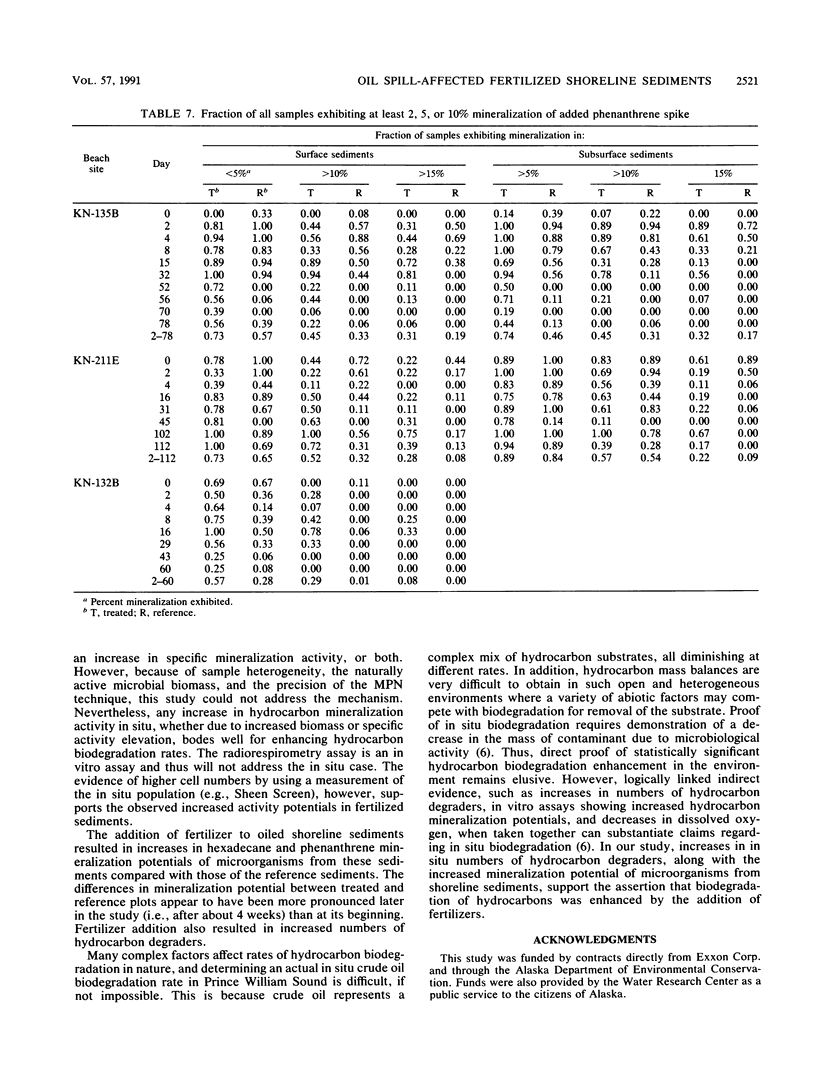
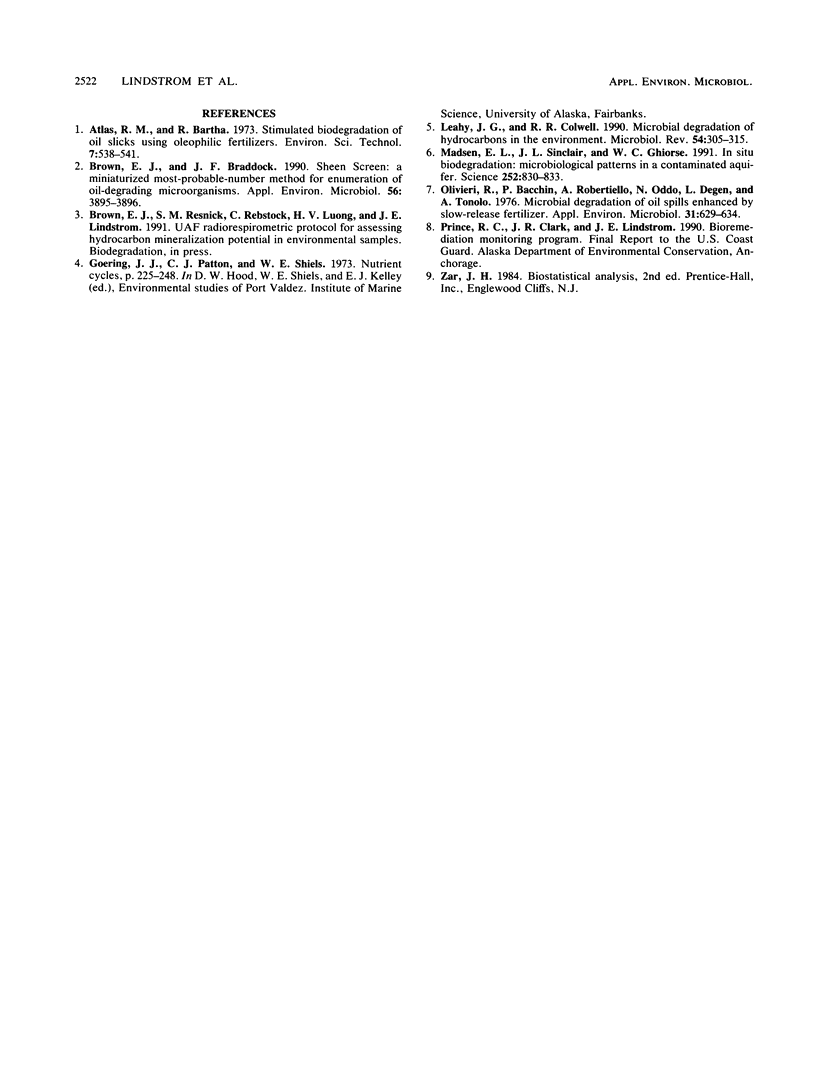
Selected References
These references are in PubMed. This may not be the complete list of references from this article.
- Brown E. J., Braddock J. F. Sheen screen, a miniaturized most-probable-number method for enumeration of oil-degrading microorganisms. Appl Environ Microbiol. 1990 Dec;56(12):3895–3896. doi: 10.1128/aem.56.12.3895-3896.1990. [DOI] [PMC free article] [PubMed] [Google Scholar]
- Leahy J. G., Colwell R. R. Microbial degradation of hydrocarbons in the environment. Microbiol Rev. 1990 Sep;54(3):305–315. doi: 10.1128/mr.54.3.305-315.1990. [DOI] [PMC free article] [PubMed] [Google Scholar]
- Madsen E. L., Sinclair J. L., Ghiorse W. C. In situ biodegradation: microbiological patterns in a contaminated aquifer. Science. 1991 May 10;252(5007):830–833. doi: 10.1126/science.2028258. [DOI] [PubMed] [Google Scholar]
- Olivieri R., Bacchin P., Robertiello A., Oddo N., Degen L., Tonolo A. Microbial degradation of oil spills enhanced by a slow-release fertilizer. Appl Environ Microbiol. 1976 May;31(5):629–634. doi: 10.1128/aem.31.5.629-634.1976. [DOI] [PMC free article] [PubMed] [Google Scholar]


